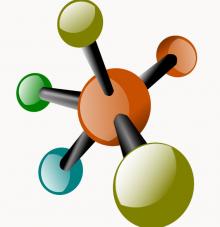חדשות המחקר
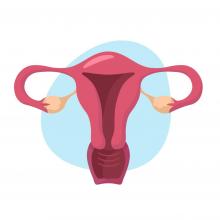
Johnny S Younis, Nora Shapso, Yval Ben-Sira: Endometrioma surgery - A systematic review and meta-analysis of the effect on antral follicle count and anti-Müllerian hormone (Am J Obstet Gynecol .)
Accurate pre-operative counseling regarding whether endometriotic cystectomy has a detrimental effect on the ovarian reserve has been a considerable challenge, as studies assessing antral follicle counts (AFC) and anti-Müllerian hormone (AMH) levels have reported conflicting results. Our objective was to explore the impact of endometriotic cystectomy on both AMH and AFC measurements, but focusing on prospective studies where both were measured for each woman concurrently (overcoming unmeasured confounding), in the same setting (overcoming surgical technique differences) and at the same three postoperative time points; early (one to six weeks), intermediate (two to six months) and late (nine to eighteen months), to overcome time-sensitive changes.
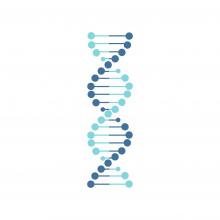
Guy Journo, Anuj Ahuja, Yonatan Eran, Meir Shamay: Global CpG DNA Methylation Footprint in Kaposi's Sarcoma (Front Cell Infect Microbiol . )
Kaposi's sarcoma-associated herpesvirus (KSHV), also familiar as human herpesvirus 8 (HHV-8), is one of the well-known human cancer-causing viruses. KSHV was originally discovered by its association with Kaposi's sarcoma (KS), a common AIDS-related neoplasia. Additionally, KSHV is associated with two B-lymphocyte disorders; primary effusion lymphoma (PEL) and Multicentric Castlemans Disease (MCD). DNA methylation is an epigenetic modification that is essential for a properly functioning human genome through its roles in chromatin structure maintenance, chromosome stability and transcription regulation. Genomic studies show that expressed promoters tend to be un-methylated whereas methylated promoters tend to be inactive. We have previously revealed the global methylation footprint in PEL cells and found that many cellular gene promoters become differentially methylated and hence differentially expressed in KSHV chronically infected PEL cell lines. Here we present the cellular CpG DNA methylation footprint in KS, the most common malignancy associated with KSHV.
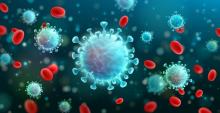
Hiba Zayyad: BNT162b2 vaccine breakthrough: clinical characteristics of 152 fully-vaccinated hospitalized COVID-19 patients in Israel (Clin Microbiol Infect . )
mRNA COVID-19 vaccines have shown high effectiveness in the prevention of symptomatic COVID-19, hospitalization, severe disease, and death. Nevertheless, a minority of vaccinated individuals might get infected and suffer significant morbidity. Characteristics of vaccine breakthrough infections have not been studied. We sought to portray the population of Israeli patients, who were hospitalized with COVID-19 despite full vaccination.

Maya Frank Wolf, Inshirah Sgayer, Areej Asslan, Eilam Palzur, Oleg Shnaider, Jacob Bornstein: The Hormonal Milieu by Different Labor Induction Methods in Women with Previous Cesarean Section: a Prospective Randomized Controlled Trial (Reprod Sci .)
The physiological pattern of hormonal and signaling molecules associated with labor induction is not fully clear. We conducted a preliminary study in order to investigate hormonal changes during labor induction in women with previous cesarean section.

Tawfik Khoury: Gastrointestinal manifestations of synthetic cannabinoids: a retrospective cohort study (BMC Gastroenterol . )
Synthetic cannabinoids (SC) are chemical substances which activate cannabinoid receptors similarly to tetrahydrocannabinol, but with a higher efficacy. These substances are used as illicit recreational drugs, often smoked as herbal mixtures. The continuing availability and rapid evolution of SC is an ongoing health risk. The adverse effects of SC are wide ranging, and span from mild behavioral changes to death. Knowledge regarding gastrointestinal (GI) manifestations of SC use is sparse.

Ibrahim Marai: Long QT Syndrome and Torsade de Pointes Ultimately Treated With Quinidine: Introducing the Concept of Pseudo-Torsade de Pointes (Circulation . )
A 36-year-old woman was hospitalized elsewhere after an episode of nocturnal seizures. Her family history is negative for sudden death. One week before the event she received esomeprazole and metoclopramide for abdominal pain, discontinuing both medications 2 days before the index event. Early morning on the day of hospitalization, while still asleep, she developed strenuous breathing. The loud breathing awakened her husband who noticed she was “stiff,” only to then become apneic and limp. She eventually regained consciousness but remained confused as she was transferred to a hospital....
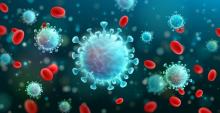
Nimrod Rahamimov, Veronica Baturov, Adi Shani, Ilai Ben Zoor, Doron Fische, Anna Chernihovsky: Inadequate deltoid muscle penetration and concerns of improper COVID mRNA vaccine administration can be avoided by injection technique modification (Vaccine .)
Recent phase-3 clinical trials have demonstrated very encouraging results for mRNA based vaccines against COVID-19. Current FDA and manufacturer guidelines mandate intramuscular administration of these vaccines, as other administration routes may not provide the same levels of effectiveness and safety. Observing the vast amount of published media images of persons receiving their vaccines, the authors noted in many cases the injection technique involved skin bunching, raising concerns of inadequate deltoid muscle penetration and consequent lowered vaccine efficacy. Our study hypothesis was that skin bunching will increase the skin-to-muscle distance over 20 mm, the maximal distance allowing the required 5 mm muscle penetration with a 25 mm needle.

Elias Daud, Offir Ertracht, Nadav Bandel, Gassan Moady, Monah Shehadeh, Tali Reuveni, Shaul Atar: The impact of empagliflozin on cardiac physiology and fibrosis early after myocardial infarction in non-diabetic rats (Cardiovasc Diabeto
Myocardial fibrosis is a multistep process, which results in collagen deposition in the injured muscle. Empagliflozin, a sodium-glucose cotransporter 2 inhibitor (SGLT2i), decreases cardiovascular events risk. Little is known on the effects of empagliflozin in non-diabetic patients early post myocardial infarction.

David Karasik: Identification of novel and rare variants associated with handgrip strength using whole genome sequence data from the NHLBI Trans-Omics in Precision Medicine (TOPMed) Program (PLoS One . )
Handgrip strength is a widely used measure of muscle strength and a predictor of a range of morbidities including cardiovascular diseases and all-cause mortality. Previous genome-wide association studies of handgrip strength have focused on common variants primarily in persons of European descent. We aimed to identify rare and ancestry-specific genetic variants associated with handgrip strength by conducting whole-genome sequence association analyses using 13,552 participants from six studies representing diverse population groups from the Trans-Omics in Precision Medicine (TOPMed) Program.
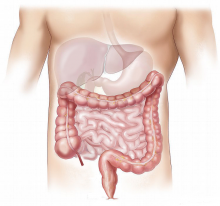
Amir Mari, Tawfik Khoury, Wisam Sbeit: Post-Diverticulitis Colonoscopy Was Not Associated with Higher Colonic Adenoma and Carcinoma: A Multicenter Case-Control Study (Medicina (Kaunas) .)
Colonoscopy following an episode of acute diverticulitis is currently recommended to rule out underlying colon cancer. However, a number of studies have debated this recommendation. We aimed to explore whether patients with colonic diverticulosis who experienced an episode of acute diverticulitis had higher prevalence colonic pathologies, essentially colonic adenomas and colorectal carcinoma (CRC) on a follow-up colonoscopy.
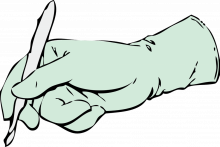
Novel Transgastric Endoluminal Segmental Esophagectomy and Primary Anastomosis Technique: A Hybrid Transgastric Thoracoscopic Esophagectomy for the Treatment of High Grade Dysplasia and Early Esophageal Cancer in a Porcine Ex vivo Model (Front Surg .)
Multiple modalities are currently employed in the treatment of high grade dysplasia and early esophageal carcinoma. While they are the subject of ongoing investigation, surgery remains the definitive modality for oncological resection. Esophagectomy, however, is traditionally a challenging surgical procedure and carries a significant incidence of morbidity and mortality. Endoscopic mucosal resection (EMR) and endoscopic submucosal dissection (ESD) are considerably less invasive alternatives to esophagectomy in the diagnosis and treatment of high grade dysplasia, early esophageal squamous cell carcinoma and adenocarcinoma. However, many early esophageal cancer patients, with favorable histology, who could benefit from endoscopic resection, are referred for formal esophagectomy due to lesion characteristics such as unfavorable lesion morphology or recurrence after previous endoscopic resection. In this study we present a novel, hybrid thoracoscopic transgastric endoluminal segmental esophagectomy with primary anastomosis for the potential treatment of high grade dysplasia and early esophageal cancer in a porcine ex vivo model as a proposed bridge between endoscopic resection and the relatively high mortality and morbidity formal esophagectomy procedure. (Anton Kvasha, Muhammad Khalifa, Seema Biswas, Moaad Farraj, Zakhar Bramnik, Igor Waksman)
Elon Glassberg, Avi Benov: A prehospital scoring system for predicting the need for emergent blood product transfusion (Transfusion . )
Several tools have been proven to predict the need for massive transfusion in trauma casualties, yet tools that are easily applicable in the prehospital setting for predicting the need for any blood product transfusion in the emergency department (ED) are lacking.

Elite Arnon-Sheleg: The role of nuclear medicine in the workup of chronic thromboembolic pulmonary hypertension (CTEPH) in a patient suffering from syncope and shortness of breath (Hebrew) (Harefuah .)
In patients diagnosed with pulmonary hypertension (PH), V/Q lung scintigraphy performed in Nuclear Medicine departments can demonstrate pulmonary embolisms and diagnose chronic thromboembolic pulmonary hypertension (CTEPH). Lung scintigraphy has higher sensitivity and specificity for CTEPH in comparison to other imaging methods, and is considered to be the method of choice in the workup of patients with unexplained PH. In the case presented, lung scintigraphy performed at two time points in a patient with PH demonstrated chronic bilateral pulmonary embolisms and aided in the diagnosis of CTEPH.

Tomer Meirson: The common sense behind clinical trial names: an empirical study of trial acronyms (Account Res .)
The use of acronyms to name clinical trials, some of which might be manipulative or even coercive, is increasingly popular yet controversial. We aimed to evaluate whether trial acronyms are associated with appealing linguistic cues born of marketing psychology using trade names of perfumes.
Gon Carmi, Alessandro Gorohovski, Milana Frenkel-Morgenstern: EvoProDom: Evolutionary modeling of protein families by assessing translocations of protein domains (FEBS Open Bio . )
Here, we introduce a novel "evolution of protein domains" (EvoProDom) model for describing the evolution of proteins based on the "mix and merge" of protein domains.



